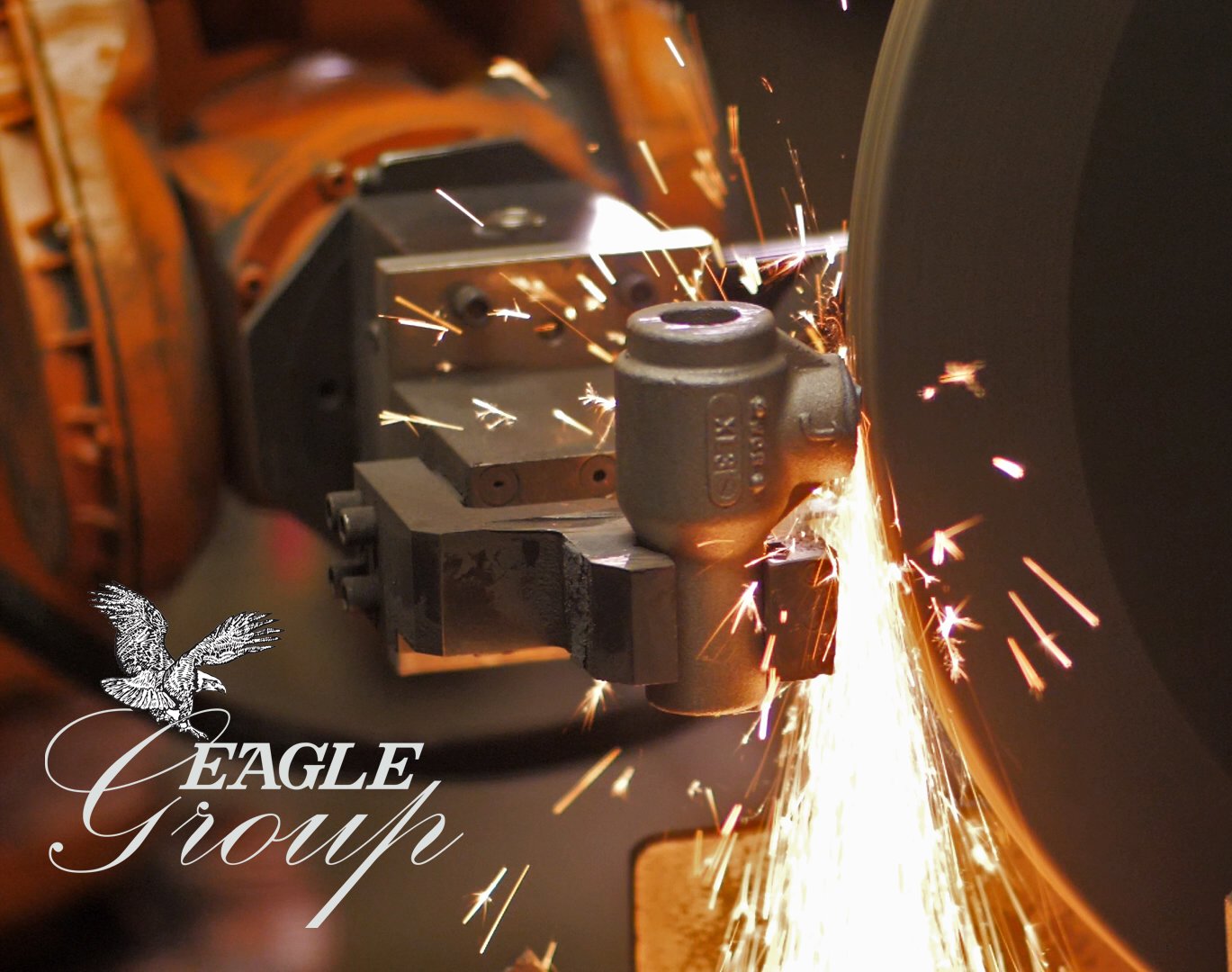The Rise of Robotics in Metalcasting and Machining

The use of robotics in manufacturing, including metalcasting and machining, has grown steadily since the 1970s. Industrial automation increasingly relies on robotics as a way to improve efficiency and replace monotonous, repetitive human tasks.
Robots are used for a wide variety of tasks in manufacturing, from transportation to assembly. In metalcasting and machining, robots can be used to complete nearly any programmable task, from dipping and pouring to grinding and milling.
What's a Robot, Anyway?
Defining a robot is more difficult than you might expect. As the term, "robot," captures the public's imagination, product marketing further blurs the lines by re-branding a slew of otherwise standard, if programmable, machines. The issue is nicely summed up by MIT roboticist Kate Darling: "...it's much sexier to call something a robot than call something a dishwasher.”
Most roboticists (and industrial automation specialists) agree that robots are physical machines that work autonomously, or semi-autonomously, to carry out specific tasks. They utilize sensors to evaluate conditions of the workpiece and the overall environment, and their overall operation involves some form of artificial intelligence.
In manufacturing, it's easier to spot a robot on the shop floor than it is to define one. The most common form is the robotic "arm," an articulated, mechanical limb capable of evaluating, moving and processing workpieces in a variety of ways.
Robotics at the Eagle Group
The Eagle Group already employs robotics technology in two of our casting facilities: Eagle Alloy, Inc. and Eagle Precision Cast Parts, Inc.
Eagle Alloy, a shell-molding facility, has three robotic cells that grind gating from cast parts. The robotic arms employed, produced by ABB Robotics, are designed to be adaptable for flexible use. In other words, the robots can be programmed to perform work on a wide variety of parts, or even to carry out tasks beyond grinding and gating removal.
The use of robots already improves Eagle Alloy's grinding consistency, increases speed and reduces the difficulty of manual labor associated with these tasks. But that's not the end of it: according to Nic Tarzwell, Eagle Alloy CTO, "We plan to expand and grow the concept. Our future robotic cells can be improved to add automated inspection to screen for dimensional tolerances as well as casting defects and flaws."
Eagle Precision provides precise, often complex investment casting services, and the addition of a Fanuc robot arm results in more consistent shell quality for investment molds. It also improves processing time and reduces the need for man-hours focused on this particular operation.
For this busy investment casting facility, the efficiency imparted by robotics leads directly to increased production, allowing Eagle Precision to complete more overall jobs. In the future, Eagle Precision plans to implement a second robot to apply backup dips to investment molds.
Watch the Eagle Group's Robotic Grinding and Dipping Cells in Action
Increasing Use of Robotics in Metalcasting
The Eagle Group isn't alone in our adoption of robotics for industrial automation. A report from PwC finds that half of U.S. manufacturers are making use of some form of robot in production. Globally, South Korea is the clear leader in robotics implementation, but the U.S. also ranks easily in the top ten.
In casting and machining, however, the use of robotics is one more thing that sets the Eagle Group apart from competitors. About half of industrial robots worldwide are used in welding, while documentation from industrial robotics firm ABB shows that just 10% of their robots are used for sand casting. Meanwhile, the Eagle Group's robotics systems are already having a positive effect to combat labor shortages seen in today's market.
While robots have brought Eagle Alloy and Eagle Precision concrete benefits, their implementation did not come without challenges. "Finding people in our area with knowledge of robotics is difficult," according to Eagle Precision Vice President, Debbie Pipoly. "Very little education and training is currently available." Similarly at Eagle Alloy, preparations took nearly a whole year before the launch of the first robotic cell in 2017.
The hard work paid off in the end, and both companies are currently seeing tangible improvements in part quality and process due to robotics. If current trends continue, other metalcasters will most likely adopt robotics technology in the near future, but the Eagle Group's commitment to constant improvement has given us a head start.
Learn more about what the Eagle Group can do, from metalcasting to full-service CNC machining and advanced inspection
Tags: Eagle Alloy, Eagle Precision, Robotics

Written by AJ Menefee
AJ Menefee is VP of Technical & Engineering at Eagle Precision Cast Parts in Muskegon, MI.





